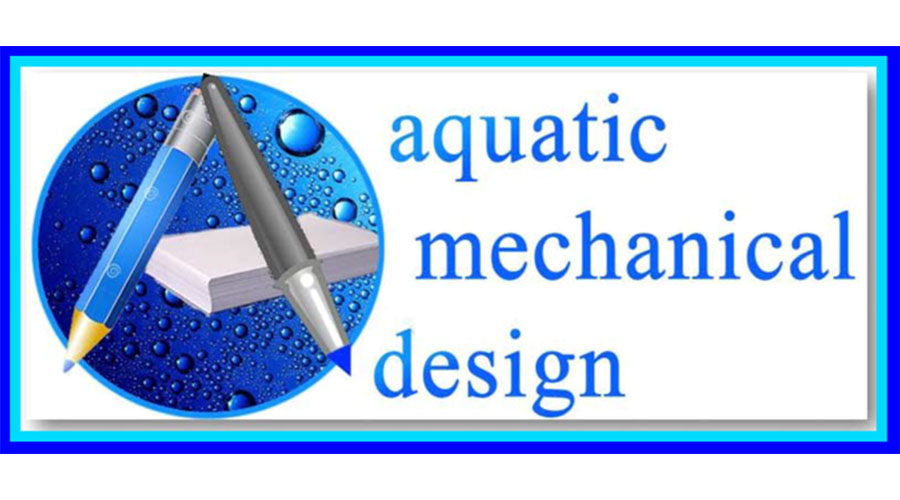INSTRUCTIONS:
Click on the images below to open the enlarged view, after opening click again to 2 x enlarge and then scroll with your mouse’s thumb wheel while holding your “Ctrl” key in order to magnify the image larger or smaller, use your browser’s back arrow to return to this webpage.
REQUEST FOR INFORMATION #1: This webpage has been provided for the purpose of reviewing the Revision #3 PRELIMINARY planning sheet P-2 Site Plan – Detail Assignments – LAYOUT.
The numeric assignments on the drawings below correspond to a series of DETAILS (See Titled Headings), which will elaborate upon the construction installation specifics for each of the labeled swimming pool devices / components.
When the mechanical drawings are completed as a set, then these DETAILS will be incorporated into a set of drawings. The DETAILS will be exhibited on 24″ x 36″ D-size sheets amounting to twelve (12-ea) per page sheet.
Preliminary Pool Layout 11-2-22-REV #3
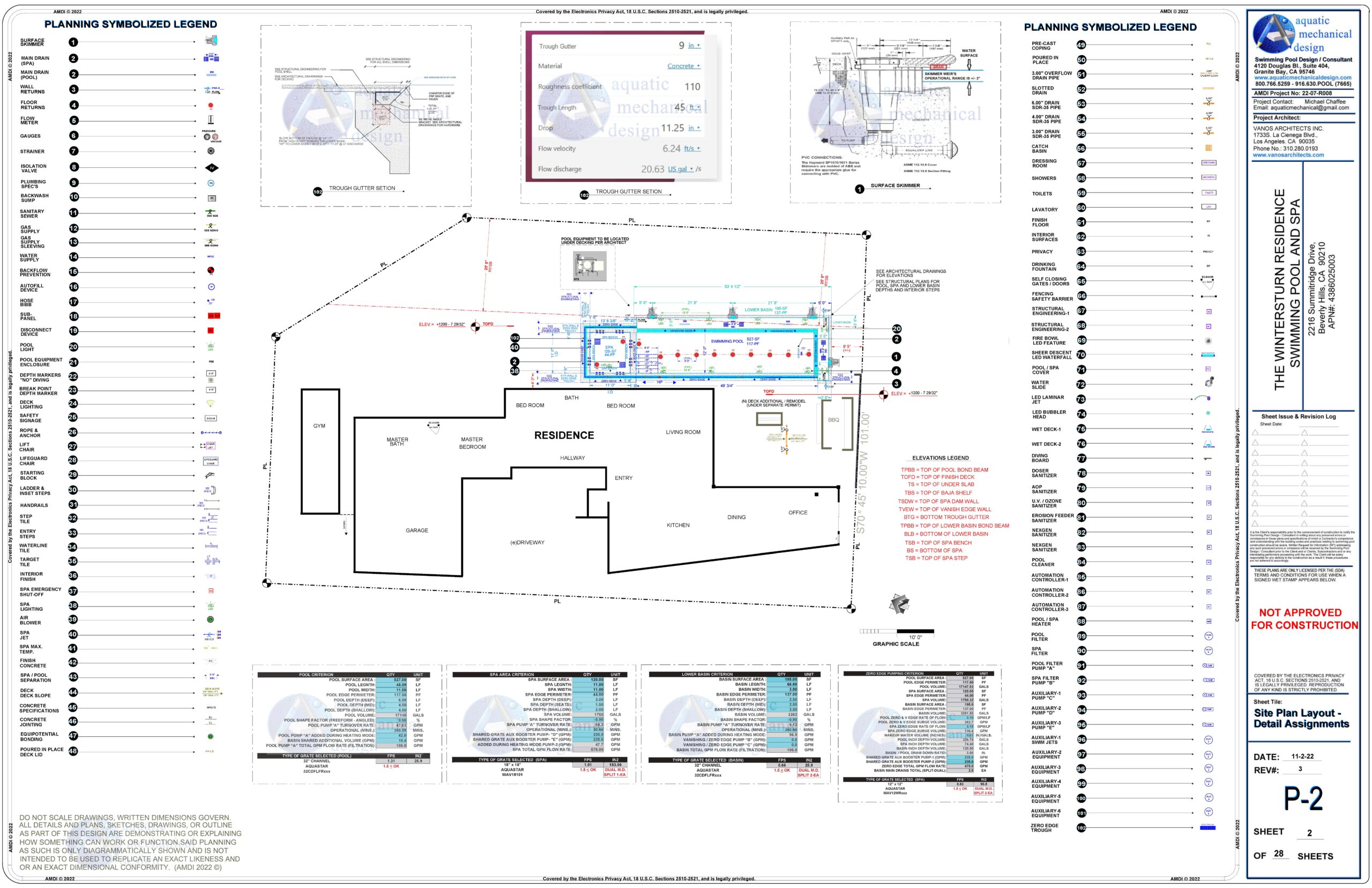
Preliminary Pool Layout 11-2-22-REV #3
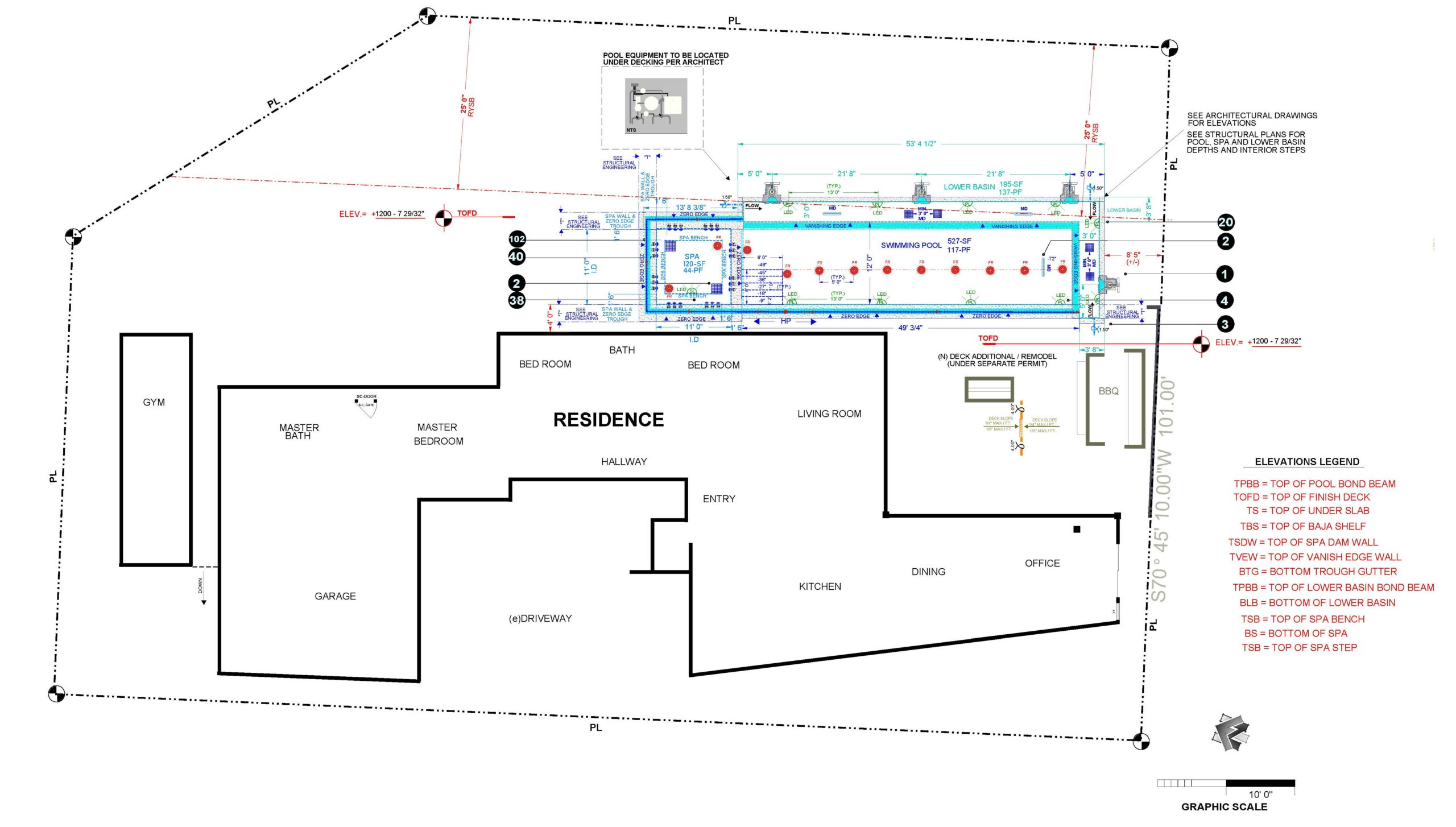
Preliminary Pool Layout 11-2-22-REV #3
REQUEST FOR INFORMATION #2: See the PRELIMINARY planning sheet P-1c Site Plan – Elevations – LAYOUT below. This sheet has identified several elevations that will need to be clarified. Please see the SPOT ELEVATION locations below and provide us with the correct +plus or -minus values for each of these locations.
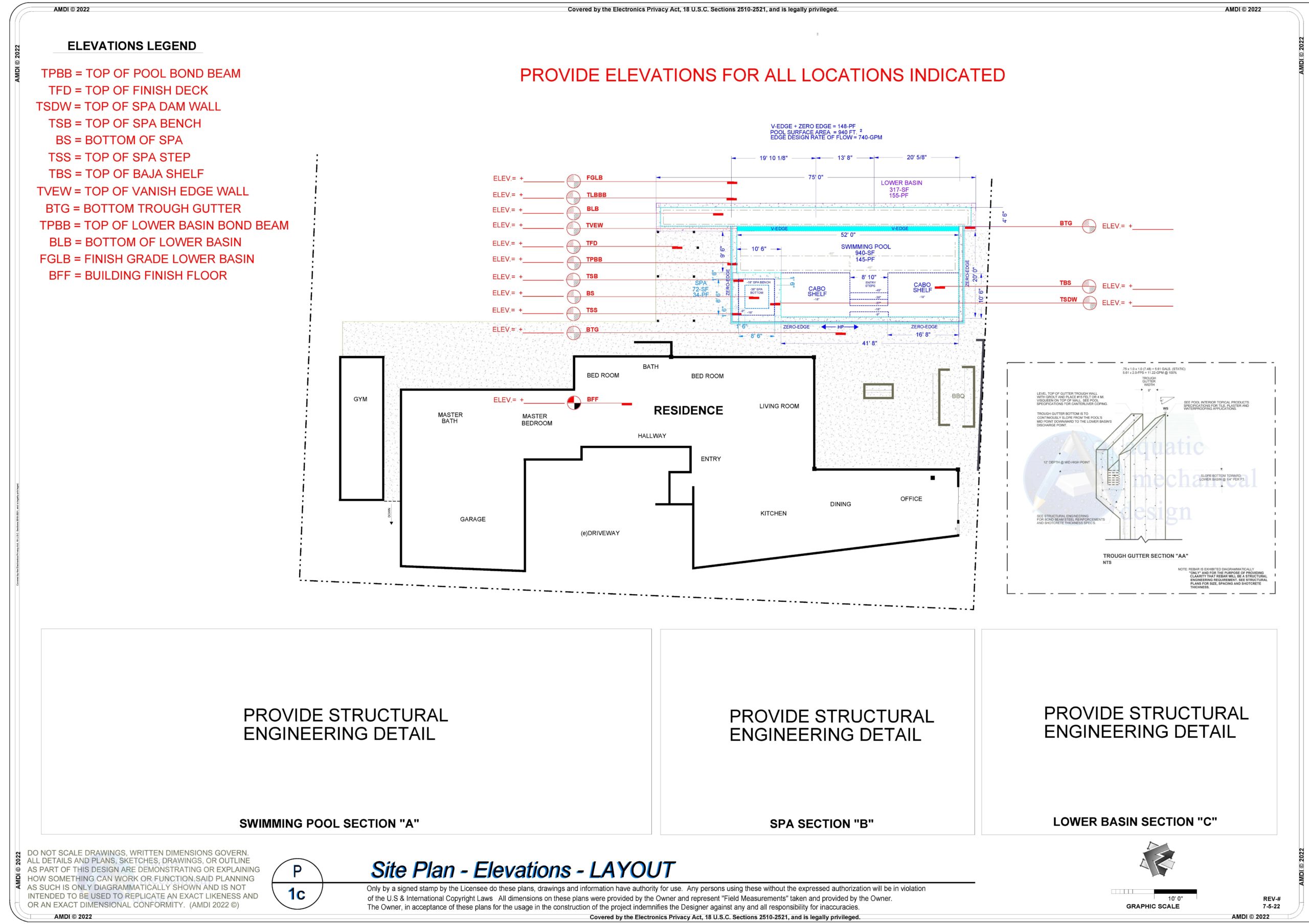
The mechanical design intent isn’t to define the ELEVATIONS but to collaborate with the architectural and structural intention for the site’s desired elevations.
Please review the LOCATIONS indicated (above) and provide us with the proposed elevations per the structural engineering / architectural layout for the pool, spa, lower basin, decking, etc..
We will also need SWIMMING POOL, SPA and LOWER BASIN structural engineering SECTION DETAILS so that we can collaborate the mechanical design’s piping, conduits and device penetrations accordingly.
We have produced a ZERO EDGE TROUGH DETAIL (below) that reflects the intentions for the water flow characteristics on three (3) sides of the pool and the forth (4th) side, which will be the VANISHING EDGE portion that will vertically drop into the Lower Basin.
The ZERO EDGE TROUGH will have a sloping bottom per the TROUGH DETAIL provided below.
DESIGN INTENT IMPORTANCE: The TROUGH bottom is intended to have a slope (min. 1/4″ per horizontal foot of spanning distance) that starts at a 12″ depth (high point at center of pool) and descends down to the Lower Basin’s water surface elevation.
The distance for each leg of the TROUGH from the center high point to the discharge point located at the Lower Basin’s water surface is fifty-feet (+/-45′). This will require that the Lower Basin’s water surface must be at least -23.25″ (-12″ + -11.25″) at both intersections with the Lower Basin.
NOTE: The Lower Basin’s water surface elevation can be revised to be lower but, the -23.25″ will be the minimum in order to accomplish the anticipated makeup recovery flow rate.
The water depth of the Lower Basin must also have a minimum depth of 3′-0″ in order to mitigate the risk of creating vortex channeling at the MAIN DRAINS during the high volume (740-gpm) pumping operation needed for the Zero Edge operation.
See the TROUGH DETAIL below;
Zero Edge Trough Detail 11-2-22-REV#3
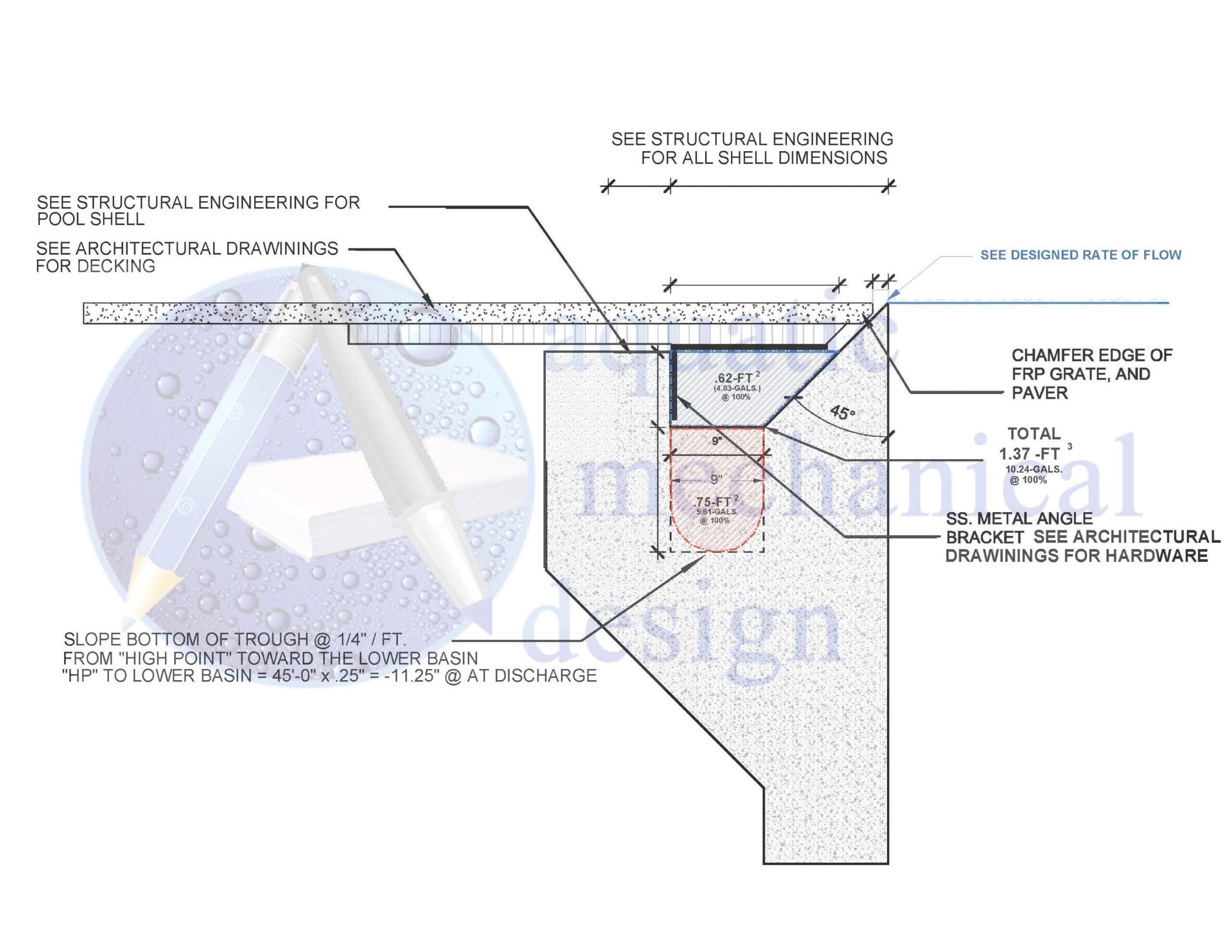
TROUGH EDGE CONFORMITY & TOPICAL APPLICATIONS:
A crucial element in the construction process is to accomplish a uniform and exact level on the entire perimeter of the ZERO EDGE. The completed Gunite tolerances for the edge flow must comply with a +/- 5/32″ uniform conformity.
Failing to accomplish this will result in requiring more water to have to flow over the edge and if this occurs then that requirement may exceed the pumping systems design capabilities.
The pumping design will be utilizing dual variable flow / speed pumps that can have an adjustable output in order to accomplish the optimum response but, this output will have a limit.
Therefore, it is imperative that during the construction process that close attention is paid to the selection of the topical products (tile, etc.) and the techniques for the installation on the pool’s edge are to be closely monitored and evaluated.
A mortar / Gunite cold joint can develop due to the concretes being applied at different times, it can occur in combination of different materials with different properties and or contents.
FLOATING THE BEAM – STACKING MORTAR
There is a practice in the swimming pool industry that attempts to compensate for uneven or irregular Gunite application results. This is called FLOATING THE BEAM and should NOT be allowed on this pool.
Mortar and Gunite will both have different densities and when mortar is stacked on top of Gunite in order to makeup for what may have resulted in a varied Gunite application level (+1″, +2″, 3″, etc..) then the application of stacking a thick mortar base will end up as a cold joint. Doing so can lead to horizontal cracking to develop over time and delamination of the topical products (tile, etc.)
NOTE: We include one (1) planning revision at the preliminary design stage. Further changes, modifications, corrections and plan productions are to be considered an additional service at a $585.00 / min. cost as billable work, upon approval.
If this swimming pool layout is satisfactory and it is your desire to direct us to move forward with this understanding we will need the acknowledgement of the Client’s authorization and acceptance via email response.
On the other hand if a revision is needed please indicate on a markup drawing what will be necessary in order to accomadate any request for changes.
Thank You!
Michael Chaffee
Aquatic Mechanical Design Inc.
